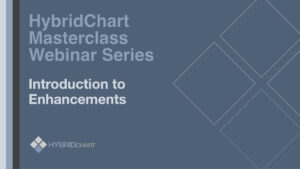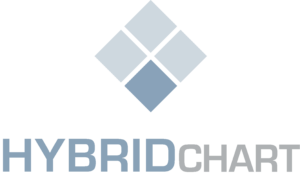- Focus on your PEOPLE
Your number one priority if you are sitting in the C-Suite is taking care of your PEOPLE. Wait. What? You may be thinking, “Shouldn’t patients always come first? “I disagree. What many top leaders mistakenly do is alienate themselves from their people. And, in front of the line is the medical staff. Often there is a silent (or not so silent) battle between the executive C-suite and the medical staff. This is where it all goes wrong. This battle of the wills ultimately decreases the quality of care provided to patients. It’s sort of like the old saying, “If momma ain’t happy, ain’t nobody happy.” What I have found in my twenty-five years of providing leadership within hospital systems working elbow-to-elbow with physicians can be narrowed down to one sentence: Physicians want to be heard; we need to listen, and most importantly, be responsive to their needs to enable them to perform at their best. When there is alignment between leadership and providers—physicians provide much better care for their patients. They come through your doors throughout the day satisfied and engaged. This leads to good collaboration with the nursing and clinical support staff, which in turn improves quality of care and patient satisfaction.
Happy Physicians = Happy Nurses = Happy Patients
- Align Care for Patients to Focus on Population Health
It’s no secret care is shifting from the in-patient world to the out-patient world. Identifying and managing chronic care conditions is a top priority for healthcare leaders. Chronic diseases, while long-lasting and likely having no cure, are conditions that can be controlled if monitored closely. Monitoring patients at home utilizing telehealth and mobile technology enable their providers to be aware of concerns before they turn critical. People living with these conditions also need tools and resources that enable them to manage their daily symptoms to reduce hospitalizations and complications.
“According to the Centers for Disease Control, chronic disease is the leading cause of death and disability in the United States, accounting for 70% of all deaths.”
Center for Managing Chronic Disease, University of Michigan website.
Mobile Health technology, such as remote patient monitoring, changing patients’ behaviors and habits through routine PCP visits, and identifying and providing appropriate medical management can greatly assist and manage chronic health conditions effectively. However, when these patients are admitted to the hospital, smart automation needs to occur. Smart automation is the technology of developing algorithms or pathways within your patient platform that allow for alerting and summoning team members automatically to immediately provide care to the patient. This technology requires nothing special for the physician to do; rather, simply by putting in ICD-10 codes, algorithms or pathways can be set up to deploy staff instantly to the patient’s bedside. This enables the patient to receive treatment quickly and to be discharged as soon as possible. Additional algorithms can be set up for the hospital discharge planning team to schedule and alert out-patient follow up services to occur. Smart hospital rounding software should also be explored for all physicians providing care within your system. Tools for discharge management to ensure all your patients seen within the hospital REMAIN within your care in the out-patient world. This is a revenue stream that is often missed if your discharge processes do not include automation for follow-up care. As physicians’ round in the hospital, whether they are employed or independent, you want to have a transparent dashboard so monitoring can occur in real time. Charge capture and enlisting a charge capture solution is extremely important to ensure your providers AND the hospital get paid for all the services rendered. Treating patients at the appropriate point of care and truly working on Population Health Initiatives is critical. In the end, our larger goal should be to reserve the hospital setting for truly acute care patients.
- Acquire Big DATA and Artificial Intelligence to Stay Ahead
Every industry in the country is after big data. With access to timely information, decision makers can be impowered to be proactive rather than reactive. Acquiring the data or AI ‘timely’ is the quandary in healthcare. We are in dire need of actionable analytics, which allow us to have tailored insights and deliver appropriate actions. The electronic health record (EHR) is large, cumbersome, and clunky. Often, data is analyzed long after the patient has left the hospital and in fact, may have already been readmitted for another hospitalization. Healthcare has been bombarded with software solutions touting the capability to provide real-time information, interoperability, and other promises that have left leaders scratching their heads wondering which solution will work for them and their specific needs. While technology has undoubtedly advanced, the vastness can be overwhelming and seemingly, many platforms are stand-alone solutions. Software solutions with compatibility amongst companies should band together and provide wholistic, comprehensive solutions.
“Together, these advances could make data more accessible, scalable, and finely tuned. In turn, the availability of real-time information can shorten the feedback loop between results monitoring, learning, and policy formulation or investment, accelerating the speed and scale at which development actors can implement change.”2
2 Sablich, Elizabeth. “Using Big Data and Artificial Intelligence to Accelerate Global Development”, Report Produced by Artificial Intelligence and Emerging Technologies Initiative.
- Address Physician Burnout and the Ongoing National Shortage of Providers
According to U.S. News & World Report, hospitals nationwide are dealing with physician burnout. The national burnout rate is up to a whopping 54 percent of all doctors, with healthcare executives blaming how medicine is practiced in the U.S. with too much time spent on clerical demands and not enough time spent actually taking care of patients. Census management can be overwhelming, but with rounding software and smart automation, we can assist our providers with efficiencies and flow.
In a previous blog by Dr. Gregory Sanders, CEO of HybridChart, entitled “Does Technology Help or Hurt Physician Burnout?”, he attributes physician burnout to today’s practice environment being filled with stresses that continually pull physicians away from being engaged and fulfilled. He states, “There is simply not enough time in the day to adhere to all the obligations and requirements and spend quality time with every patient. Patients deserve more than 2-3 minutes of 1:1 time with their physician.”
The C-suite needs to be aware and acknowledge the prevalence of physician burn-out AND take a proactive approach to assisting their medical staff with the problem.
“According to the Association of American Medical Colleges, the US is projected to have a shortfall of up to 121,300 physicians by 2030, owing to population growth and the increased needs of a rising percentage of seniors who will require more doctors. Linda Green, the Cain Brothers & Company Professor of Healthcare Management, has a fix for the looming crisis, and it boils down to two words: increased efficiency.”3
3Green, Linda. “How to Fix the Physician Shortage”. Columbia Business School.
Physicians are going to have to see more patients in less time, which means technology, tools, and resources are going to be instrumental in improving their workflow. Other strategies to fill the looming gap include recruiting and hiring certified nurse practitioners (CNPs) and physician assistants (PAs). This should start now, and leadership should be analyzing and planning on how to utilize these providers throughout their system of care.
- Improve Operational Effectiveness
Remember at the beginning of the year when you assembled your C-suite and wrote your Strategic Plan for the year? It’s time to revisit your goals. During my time in executive leadership, we often lost track of the strategies, goals, and objectives we spent a week on as a team hemming and hawing over at the beginning of the year. That time spent was valuable in many regards—and we often get off track during the year just solving day-to-day issues. We forget about what we wanted to achieve collectively as a system, as a hospital, as a department, and as a team. Although it’s a roadmap for your organization during an uncertain (and necessary) disruptive time in healthcare, reassemble your team and revisit what you wanted to achieve for the year—you still have five months to achieve that Strategic Plan.
Meet EVOLVE by HybridChart – Our fourth generation software platform.
Take control of your entire workflow through a user-friendly solution created by a physician. Medical software too often fails to address the specific needs of providers. Rounding at one or more hospitals presents a unique challenge. There is the need for effective team collaboration and easy charge capture. Census management means true collaboration among provider and staff. Rounding at multiple facilities just got way easier. Covering on-call now has the luxury of essential information for clean hand-offs. Charge capture takes less than five seconds. Diagnoses are easy to find and follow the patient. Customized charge menus make it easy to enter the correct charge. Don’t let billing for your work slow you down. Charge in real-time and focus on caring for the patient.
HybridChart has numerous levels of safeguards against missed charges. The Charge Checker feature will scan every day of an admission and assure there are charges. Using the Charge Matrix you have visibility of all charges from multiple providers per day for any given patient.
Most practices see a revenue increase of 8-10% after using HybridChart – attributed to capturing every charge for every patient. Charges are complex enough with just the diagnosis codes and charge codes. To make your charges accurate HybridChart allows you to easily adjust the Date of Service and assign Secondary Billers such as nurse-practitioners and physician assistants. Modifiers can be built into specific Billing Modules or choose from a customized list managed by your practice. Seamlessly navigate our Charge Capture workflow and save time without losing accuracy.
An automated charge capture system may be the most profitable investment that you can make in your practice today.
You can instantly boost your revenue by 10% using our modern, high-tech and easy-to-implement charge capture system.
Smarter Rounding and Workflow Software for Doctors
At HybridChart, we provide technology that connects your healthcare team, increases efficiencies, AND improves your bottom line. HybridChart’s cloud-based software adapts to your practice’s unique workflow and will improve your profitability and patient outcomes by utilizing our 5 features: census management, charge capture, secure messaging, discharge management, and data analytics.
NEVER miss another charge and get PAID for the work you do!
If you are interested in taking your medical practice to the next level and want to employ the best hospital charge capture practice available in the industry, come visit our website at www.hybridchart.com, or call us at 1-877-684-0608 for a demo today!





